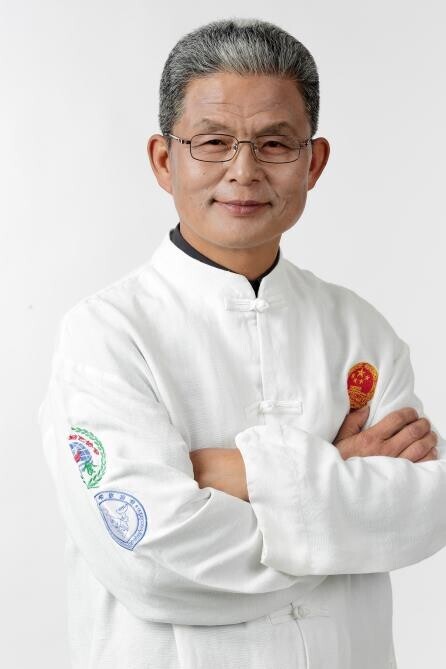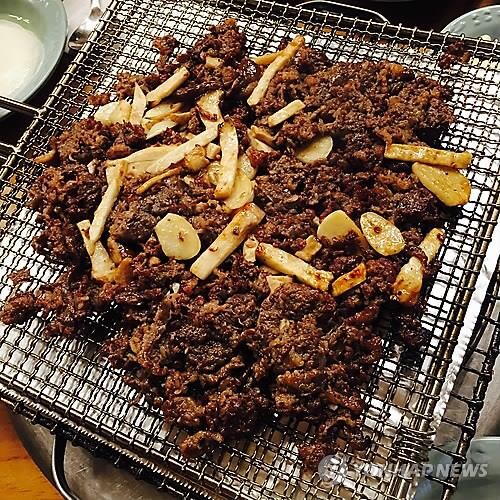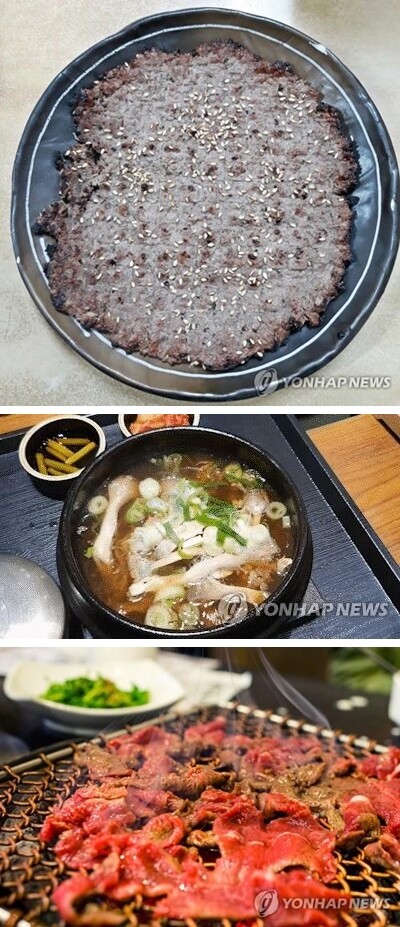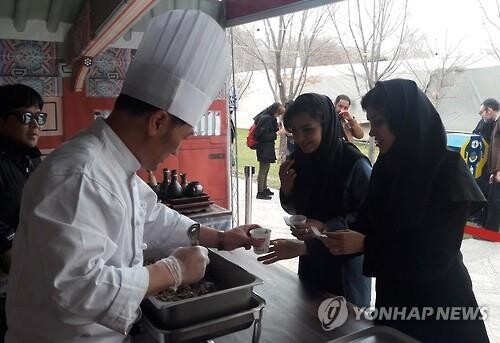*Editor’s note: K-VIBE invites experts from various K-culture sectors to share their extraordinary discovery about the Korean culture.
Choi Man-soon's Medicinal K-Food: The History of Bulgogi
By Choi Man-soon, Food Columnist and Director of the Korea Traditional Medicine Food Research Institute

Bulgogi, a traditional Korean meat dish, is one of South Korea’s most beloved "national dishes." Koreans often seek out bulgogi to regain energy or when they need strength. It has been a staple of Korean cuisine for thousands of years and is also recognized worldwide as a representative of Korean food.
Bulgogi is made by thinly slicing beef, marinating it in a sauce, and grilling it. Its origins are believed to trace back to maekjeok from the Goguryeo era, a dish where seasoned meat was skewered and grilled over a fire. During the Goryeo period, when Buddhism became the state religion and meat consumption was prohibited, maekjeok disappeared. However, it reemerged during the late Goryeo dynasty under Mongol rule, evolving into a dish called seolhamyeok.
 |
| ▲ Grilled bulgogi on a wire rack (Yonhap file photo) |
In the 1800s, as grilling equipment like griddles and iron plates became more widely used, the method of grilling meat over indirect heat on grates developed into neobiani, which eventually led to the modern form of bulgogi. The first recorded mention of seolhamyeok is found in the 1670 text Eumsik Dimibang, although the cooking method isn't directly detailed. The preparation was instead compared to other dishes like gajinureumjeok and dongajuk, indicating that seolhamyeok was a widely consumed meat dish at the time.
The specific cooking method for seolhamyeok is first described in the 1718 text Sanlim Gyeongje. It was further detailed in various other texts such as Jeungbo Sanlim Gyeongje, Gosa Sinseo, and Gyuhap Chongseo. Though the methods vary slightly across these texts, the basic process involves cutting beef, scoring it, and marinating it in a sauce mixed with flour. The meat is skewered, grilled over a low flame, and dipped in cold water three times. It is then grilled over direct heat with additional seasoning. The use of flour in the marinade was meant to help the meat cook evenly over the open flame. This unique preparation method was distinct to seolhamyeok.
Over time, seolhamyeok developed into neobiani, eventually evolving into the bulgogi we know today. The exact origins of the term "bulgogi" remain unclear, but it is generally believed to have emerged during the Japanese occupation of Korea and became more common after Korea’s liberation.
Bulgogi can be classified by its seasoning or cooking method. The two main styles are marinated bulgogi, where the beef is pre-seasoned, and salt-grilled bulgogi, where fresh meat is simply salted and grilled. It can also be categorized based on the grilling method—charcoal grilling, grate grilling, or iron plate grilling.
There are also variations based on the presence of broth. Dry-grilled bulgogi (seokseobulgogi) is cooked without broth, resulting in a crispier texture. On the other hand, yuksu bulgogi is cooked with broth and includes vegetables and noodles, making it similar to a stew. Yuksu bulgogi is said to have originated from hot pot dishes.
In the past, people would grill the meat and vegetables on a concave metal grill resembling a pot lid, eating the vegetables cooked in the center while grilling the meat on the sides. They would often mix rice with the sauce left on the grill. This method of cooking bulgogi with broth was a way to stretch a small amount of meat to feed more people. The meat absorbs the broth’s seasoning, resulting in a flavorful, tender texture.
 |
| ▲ From top to bottom: Bassak bulgogi (T), bulgogihot pot (C) and Gwangyang charcoal-grilled beef. (Yonhap file photo) |
◇ The Way of Food
In the first chapter of The Art of War, Sun Tzu presents five essential factors for warfare, the first being Tao (道). In the context of food, Tao refers to understanding the properties and benefits of ingredients before cooking. Hippocrates once said that the way food is prepared has a significant impact on the human body. Traditional medicine also recognizes that how food is processed—whether it's pure grain flour or mixed with other ingredients—affects the body differently.
The same applies to grain preparation. Whether it’s threshed, contains moisture, or is overcooked—all these factors influence how it interacts with the human body. The countless cooking methods and added ingredients result in a range of effects on health.
This year, with extreme heat and tropical nights, many people have complained of fatigue. In such times, it is crucial to consume food that suits the body’s needs to regain strength. Adequate energy is necessary to handle everyday tasks. Without it, thoughts and actions become sluggish, leading to increased stress and vulnerability to illness.
Beef is rich in high-quality protein and essential amino acids, which help boost immunity and build muscle. It is an effective ingredient for children in their growth phase and for anyone in need of recovery. It also contains ample vitamins and iron.
 |
| ▲ Visitors enjoy Korean bulgogi at the "2017 Silk Road Korea-Iran Cultural Festival" held in Isfahan, Iran, on March 13, 2017 (local time). (Yonhap) |
◇ Medicinal Beef Recipes
In the Yilinchanyo (醫林纂要), a comprehensive medical text from 1758 edited by Qing dynasty scholar Wang Bu, beef is described as sweet in taste and neutral in nature, strengthening the digestive system. The digestive organs, known as the Piwei (脾胃), are considered the most vital organs in sustaining life. This is referred to as Houtian zhiben (後天之本), meaning that they are fundamental to postnatal health and should be carefully nourished.
In terms of traditional Chinese medicine, beef nourishes the middle burner of the body, supporting the digestive system and strengthening the muscles and bones. It is also believed to dissolve phlegm, alleviate wind conditions, prevent thirst, and help combat physical weakness. Therefore, beef is considered a valuable ingredient for year-round vitality.
In medicinal cuisine (yakseon), beef is often paired with ingredients like astragalus, codonopsis root, yam, wheat, white atractylodes, dates, ginger, cinnamon, tangerine peel, white pepper, soybeans, tomatoes, and radish. Below are a few medicinal beef recipes I learned in my studies:
1. For fatigue and excessive sweating: Boil 250g of beef with 30g each of astragalus, codonopsis root, yam, and wheat, along with 15g of white atractylodes, 10 dates, and a little ginger to make a soup.
2. For weakness, stress, and poor appetite: Prepare a soup using 250g of beef with 3g each of amomum, cinnamon, tangerine peel, and white pepper, plus 15g of ginger. Add plenty of green onions and eat daily for several days to regain energy.
3. For edema and poor fluid circulation: Cook 150g of beef and 150g of black soybeans as a side dish.
4. For a weak constitution, phlegm, and skin inflammation: Stir-fry 250g of beef, 250g of pumpkin, and 25g of ginger.
5. For high blood pressure and chronic hepatitis: Boil 100g of beef with 250g of tomatoes to help alleviate symptoms.
6. For low energy and lack of motivation: Enjoy a shabu-shabu dish made with 500g of beef, 30g of goji berries, one tomato, 100g of radish, 150g of potatoes, one onion, and green vegetables.
7. For post-illness recovery: Make a porridge using 150g of beef, 20g of goji berries, and 100g of rice.
When consumed appropriately, such dishes can help improve skin elasticity, prevent dizziness, and combat insomnia, heart palpitations, and general lack of motivation. The potential for human growth is limitless, as food plays a crucial role in providing the strength needed for change and progress. This is the core philosophy of yakseon.
(C) Yonhap News Agency. All Rights Reserved























